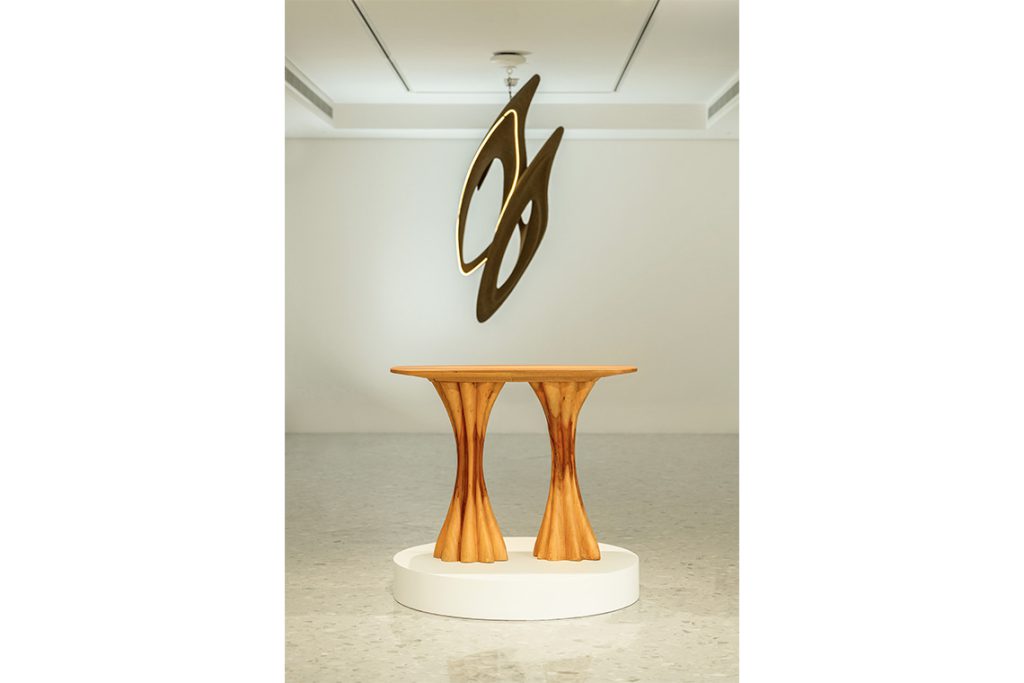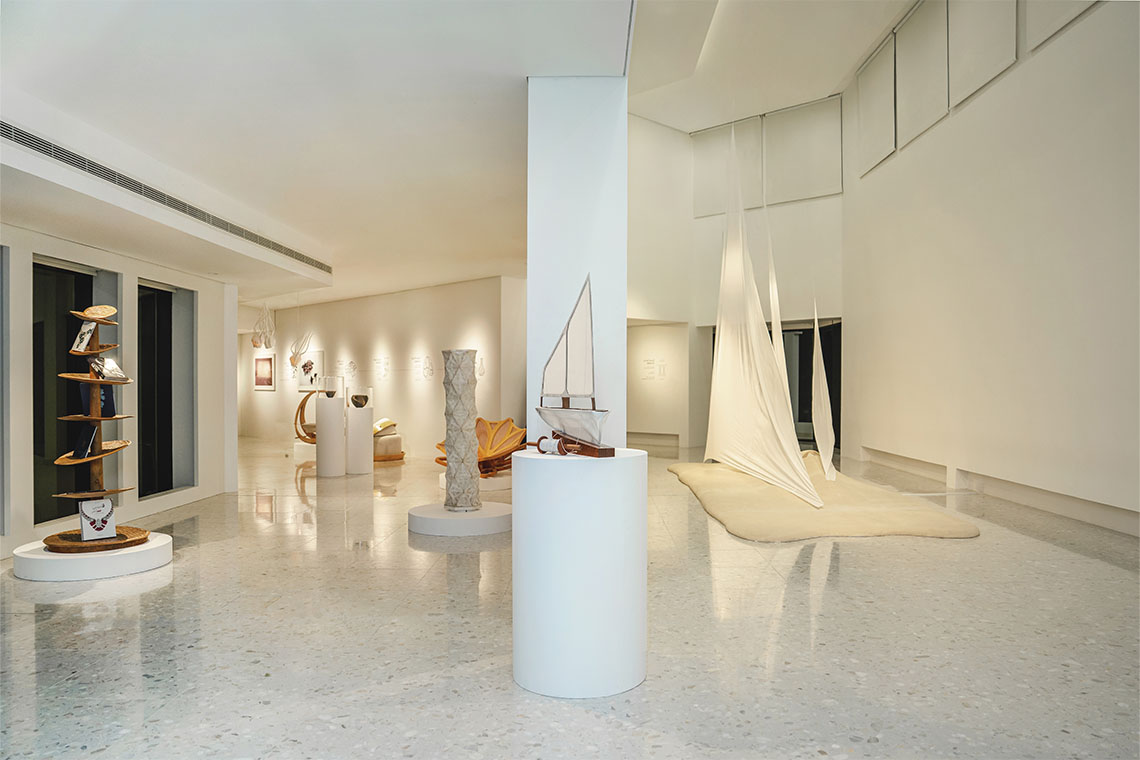Celebrating ten years of creative discovery, Van Cleef & Arpels and Tashkeel present the Emergent Designer Prize with an exhibition in which Gulf designers reinterpret regional heritage through sustainable and functional designs.
Van Cleef & Arpels, in collaboration with Tashkeel, commemorates the Emergent Designer Prize‘s 10th anniversary of creative excellence with a new show at the recently renovated Tashkeel space located in the Nad Al Sheba district. The special seven-week exhibition marks the occasion and features a collection of design talent from the United Arab Emirates, Saudi Arabia, Bahrain, Oman, Qatar and Kuwait. The Emergent Designer Prize has grown into a foundation of design development across the region since its 2013 inception. For each edition, new designers submit innovative works based on a newly curated theme. The prize has recognised ten winners so far and many more finalists, each of them bringing individual visions that are rooted in their own cultural identities and supported through local craftsmanship.
The winner of the 10th edition was Hajar Al Tenaiji, whose work Dhow Kite (2024) speaks directly to the theme, Inspiring Winds. Inspired by the historic relationship between wind and Emirati seafaring, particularly pearl diving and dhow sailing, the design serves as both a nostalgic nod and a contemporary conversation piece, capturing the essence of movement, heritage and sustainability. Al Tenaiji combines multiple elements of customary kite play with the curved elegance of dhow sails in her work, inviting reflection upon the past as well as engaging a new generation through its playful spirit and mindful craftsmanship.

“To me, wind is a silent architect,” shares Al Tenaiji with Canvas. “It shapes landscapes, carries stories, and connects past with present. The kite becomes its physical companion, it’s light enough to rise yet rooted in meaning. By evoking the dhow – a vessel that once relied on wind to navigate our coasts – I gave shape to something ephemeral, turning an invisible force into a visible expression of movement, memory and aspiration.”
Alongside Al Tenaiji, the exhibition also showcases the works of finalists Lamis Yehya and Khaled Al Kathir. With Breezeborn (2024), designer Lamis Yahya invites a witnessing of the quiet poetry of erosion, which translates into a grounded as well as ethereal form. A trace memory of wind, captured in sculpted wood, is what the console represents, not simply a piece of furniture. “I imagined what a dull, sharp-edged console table would look like when a rush of wind sweeps by and dances around it,” Yahya explains. “The form took on softened, fluid curves, as if time and air had gently sculpted it.”

Breezeborn. 2024. Console. Image courtesy of Van Cleef & Arpels and Tashkeel
Crafted from reclaimed jujube tree wood, the piece tells a story not just of design but of collaboration with the material itself. When the wood resisted Yahya’s original vision, it was an advice from Tashkeel team member Salim Ahmed that changed everything. “Let the wood embrace itself,” Yahya recalls him saying. In doing so, she allowed the piece to evolve organically, shaping a console that feels less like it was made, and more like it was a discovered artefact left behind by the wind itself. Smooth textures invite light to slide across its surface like wind over desert dunes, while the natural imperfections of the wood deepen its story. As Yahya puts it, the process “not only challenged me technically but also brought the concept to life in the most honest way… much like how wind sculpts ripples across the sand.”
Suspended above, Al Kathir’s No Beginning (2024) is a light fixture that gives the impression of swirling and drifting, even when still. “The wind has no clear beginning or end,” Al Kathir explains. “It points to a continuous natural cycle… a constant stream that expresses existence and interconnectedness.” The title, No Beginning, reflects this philosophy that life, like wind, is not a series of start-and-stop moments but a flowing, endless movement. The utilisation of sustainable materials firmly anchors the piece in environmental consciousness, at the same time as creating a tactile and a visual sensory experience. “Sand from the beach carries the spirit of nature,” he adds, “and these materials help establish a bond with the local environment.”
Looking forward, the 11th edition of the Emergent Designer Prize has now been announced, with the theme Blooming Poetry. Designers across the region are being encouraged to explore this rich metaphorical prompt and fully blend lyrical expression with functional form. If previous editions of the prize are anything to go by, this new iteration promises to uncover a host of new voices as well as a reimagining of design’s convergence with culture, sustainability and storytelling.



